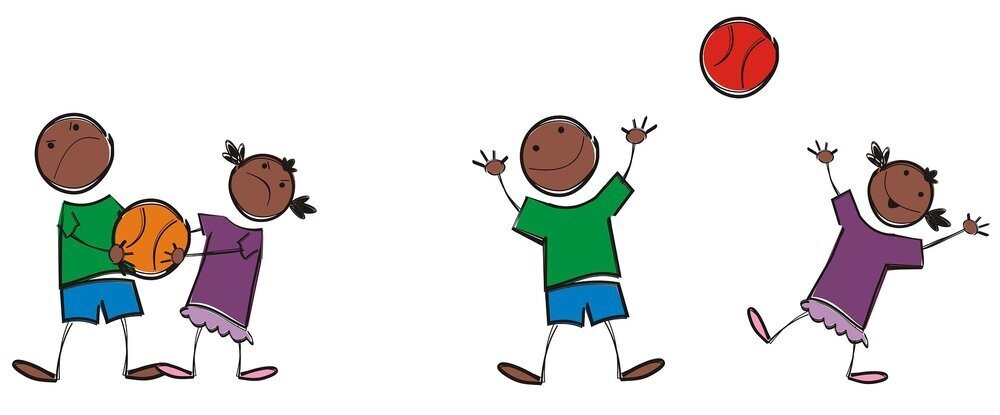By Fiona
The book “How to Talk So Little Kids Will Listen” by Joanna Faber and Julie King is a great resource for parents and caregivers of younger kids. The one aspect of the book that intrigued me the most was to start problem-solving with young kids. Problem-solving is also discussed in the book “How to Talk So Kids Will Listen and Listen So Kids Will Talk”. My first reaction was: Is it possible with my boys? Can they fully understand what it means? Do I give them too much power and freedom by asking their advice for solutions to their problems? But after I tried a few times with both my 4-year old and my 2-year old, I am so glad it worked just as described in the book and this is why I highly recommend parents give it a try!
The benefits of involving kids into the problem-solving process include:
Kids feel more cooperative.
This is also a teaching moment: when we have a conflict, what do we do?
We can train them a lifelong skill about problem solving when problem gets more difficult when they are older.
There are practical steps you can use.
First, show empathy about kids’ feeling. This is highly emphasized in multiple parenting bestsellers such as “The Whole-Brain Child” and “No-Drama Discipline”. It is important to show your connection to their feelings during the conflict. You may say: I see your brother took the lego figure from your hand and I know it is very upsetting…
Second, describe the problem. It is important to talk through the problem.
Third: involve kids into the idea generation process. Some ideas could be unrealistic, and it was ok at this brainstorming stage. Make this brainstorming a fun experience with the kid. Decide on what works for both you and your kid.
Last: implement the solution next time you have the same problem.
Alan has his strong opinion on things. I used to apply the practical parenting tactics such as offering choices when he refused to do certain things. This technique works for his older brother almost every time. However, Alan doesn’t buy it most of the time. Surprisingly this problem-solving process works much better on him. A few months ago, Alan ran straight to the street after we finished an art class and I dragged him back. I explained how dangerous it was and he should walk with me. Then he did it again and did not want me to hold his hands. I offered the choices: would like to hold my hands or would you like me to hold your hands? I tried: would you like to jump like a bunny to our car or would you like to walk like a lion to the car? He did not choose any of these, and he just laughed and ran to the street again.
It was then when I read this book by Faber and King. When I tried the problem-solving with Alan, I had all kinds of doubts. However it just happened one night when I tucked him to bed. As the book describes, it does not have to be during the time when the conflicts happen. I started with: “This morning, I see you ran to the street. I understand you were excited when you saw the cars on the street after the class. You felt funny that Mom chased after you.” He looked back at me (I was not sure by then whether he truly understood it). I continued: “The problem was that I got very worried when you ran to the street. The cars are running fast on the street and I do not want you get hurt.” Then I asked “What should Mom do?” (rather than typical saying I normally did: therefore please don’t run or please hold hands). Here was when the surprise came through: he said: Mom hand. Then I said: “That is a very good idea and I also have an idea, you can hold onto my bag too.” He said: bag…The next day: I asked him during the day (when we were not outside) why I did not want him to run to the street, he said: “Mom worried…” I was so impressed that he did remember. And I have not seen him run to the street after the class since then.
This technique also works on my 4-year old Julian as well and in an even more effective way. We would write down (I wrote but he contributed) all the ideas and crossed-out the ideas together. We left the final 3 options which worked for both of us and posted it on the refrigerator. Topics include such as: fighting about toys with Alan, very long breakfast time...when the problem happened, I asked him to go to the refrigerator and found one of the solutions from “his list”. He was much more willing to accept because he believed it was his idea as well.
I started sharing this with other parents. But I also want to remind you: this is not a magic wand and it will not work all the time. There may be another day when Alan wanted to explore the street again. However, why not give it a try when we really want to and learn everyday to raise a “growth minded,” “self-driving” and responsible kid!
Fiona has two energetic and sweet boys: Julian, four years; and Alan, two years. In her spare time--usually after the kids are asleep--she enjoys reading and watching movies of the mystery genre. She also loves yoga and Barre exercise.


